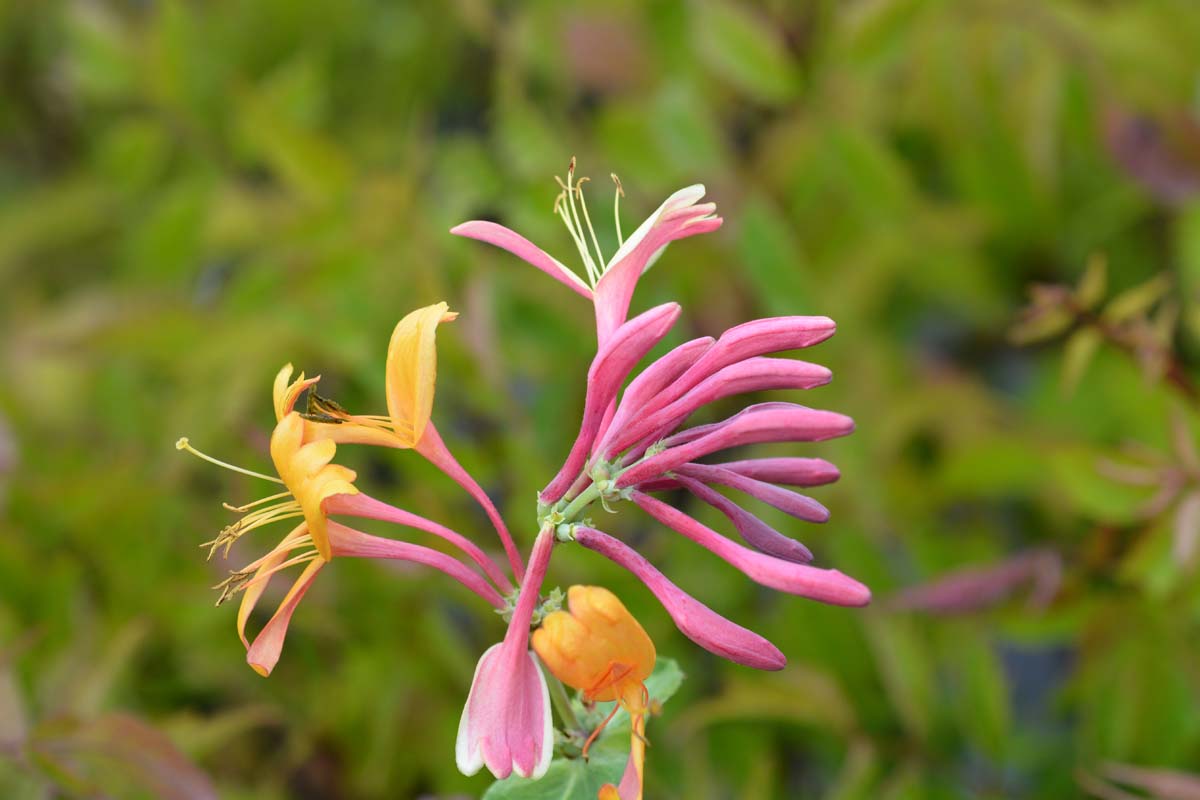Description
Lonicera – Honeysuckle – Woodbine –
There are about 180 species of deciduous and evergreen shrubs, groundcovers, and twining climbers in this genus. They are widely distributed in the Northern Hemisphere, where they grow in varied habitats ranging from woodland and thickets to rocky places. They are grown for their tubular to funnel shaped, often sweetly fragrant flowers, which are usually 2 lipped or have 5 small, spreading lobes. The leathery leaves are held in opposite pairs, up to 6″ long and usually simple. Honey suckles may be grown in a variety of situations: train climbers on a wall or fence, or into a a large shrub or small tree, grow shrub in a shrub border, or use for hedging or as a groundcover. Some species may become invasive. The berries may cause mild stomach upset if ingested. Honeysuckles are attractive to bees and birds.
Grow shrubs in any well drained soil in full or partial shade, grow climbers in fertile, humus rich, moist but well drained soil. They may become straggly unless pruned and some may need to pruned twice a year.
Prone to aphids, leaf roller, scale insects, dieback, powdery mildew, leaf spots, and blights.
L. x heckrottii – Everblooming Honeysuckle – Goldflame Honeysuckle – This deciduous or semi evergreen, twining climber is a cross between L. x americana and L. sempervirens grows 10-20′ feet high. It produces paired, oblong to oval or elliptic shaped leaves, which emerge reddish-purple and turn dark green, to 2 ½” long, blue green beneath, with the upper pairs joined at the bases. In summer it bears tubular, 2 lipped, fragrant flowers, 1 ½” long, pink outside, orange-yellow inside, held in terminal whorls, and are sometimes followed by red berries. They’re may be a recurrent bloom in fall.
Zones 6-9





